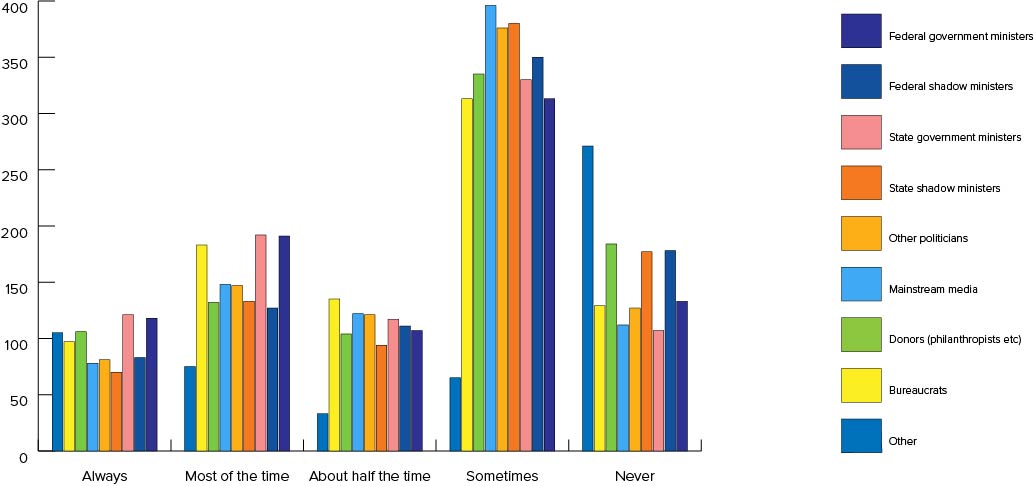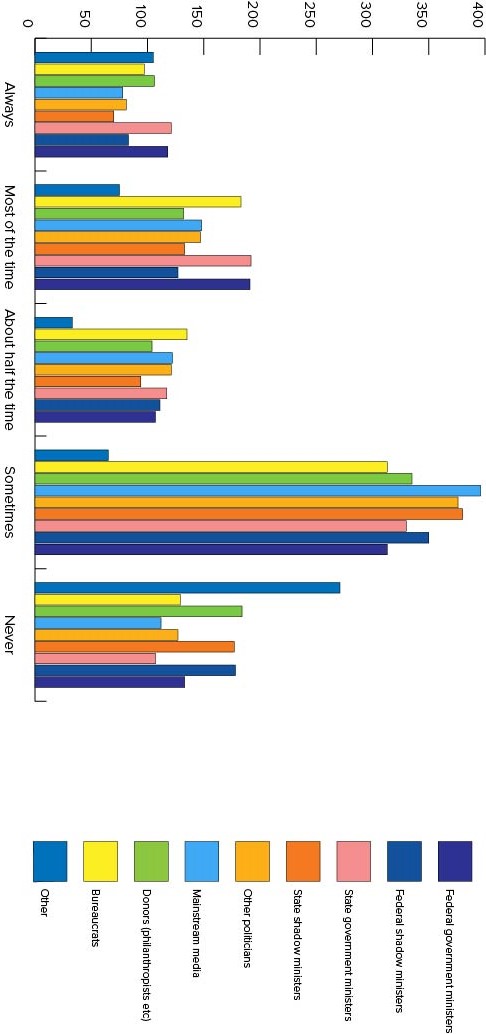In 2004 The Australia Institute led a survey of the non-government sector and produced the report Silencing Dissent: Non-government organisations and Australian democracy. It concluded that NGOs felt the government was undermining their credibility, shutting them out of civic discourse, defunding (or threatening to defund) organisations that were considered uncooperative, and micromanaging NGO activities by dismantling peak bodies.
The report detailed the growing fears across the NGO sector concerning their right to advocate in the public policy domains of most concern to them, and more broadly about their changing role in the democratic process.
A lot has happened in the 13 years since this report was published including changes to the political and regulatory landscape, the formation of the Australian Charities and Not-for-profit Commission, the passing of the Charities Act and advances in the digital landscape.
However the threat to advocacy remains a concern.
Civil Voices set out to re-examine NGO perceptions about their capacity to participate in public debate and see how public debate and advocacy has changed since the last study.
What we found is that not for profits are on a path of quiet advocacy. To a greater or lesser degree civil society organisations are engaging in various forms of “self silencing” – treading very carefully in their advocacy work less they risk financial security and political retribution.
Australian civil society needs to be supported, and encouraged to engage in frank and fearless advocacy. We cannot allow ourselves to become complacent in this regard.
The more the silencing of civil society is normalised the higher the risk becomes to the overall quality of Australian democracy.
October 2017.









